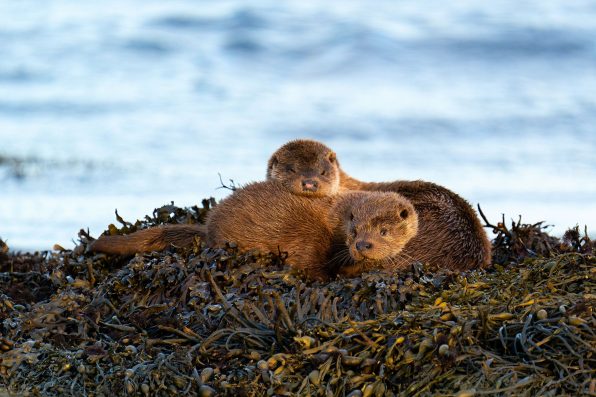Sea otters are one of the most adorable aquatic animals. But aside from being cute and charming, they also play an important role in the ocean’s ecosystems. They are known for helping kelp forests flourish, particularly in central California.
Otters like to eat sea urchins, which feed on kelp. If there are too many sea urchins, they can eat up all the kelp, leading to the destruction of underwater forests. Otters keep the sea urchin population under control, allowing kelp to thrive.
A new study published in PLOS Climate demonstrates that otters have helped kelp forests in central California overcome environmental threats and grow better than ever. Scientists from the Monterey Bay Aquarium reviewed 100 years’ worth of kelp maps and found that high sea otter populations in the area directly correlated with improved habitats.
Kelp forests are a vital part of the ocean’s ecosystem. They are made up of brown algae that provide shelter for fish and other marine creatures. Kelp helps combat erosion on the shores, mitigates the effects of storms, and battles against climate change by absorbing carbon dioxide.
Human activity on land, such as agricultural runoff from pesticides and other pollutants, can negatively impact life underwater. Parts of the ocean floor have gone from a rocky to a sandy surface, which spells trouble for kelp. The algae need rocks to establish a strong base. Warming ocean temperatures threaten kelp as well since they prefer colder water.
After researchers studied the maps of kelp, they found that kelp along the coast of California had been experiencing a seven percent decline since 1910. When they split up the state by region, they got some surprising results.
The northern California coast saw a steep drop of 63 percent, while the amount of kelp in the southern California coast decreased by 52 percent. However, central California saw an increase in the seaweed of 58 percent.
The healthy growth of kelp can be attributed to the presence of sea otters. Because of the international fur trade, otters were hunted almost to extinction. A small group of them managed to survive on California’s central coast.
In 1913, the state granted the otters full protection, and in 1977, they became protected under the Endangered Species Act. Since then, their populations have been slowly regrowing, contributing to the resilience of the region in which they make their home.

Sign up for Chip Chick’s newsletter and get stories like this delivered to your inbox.


